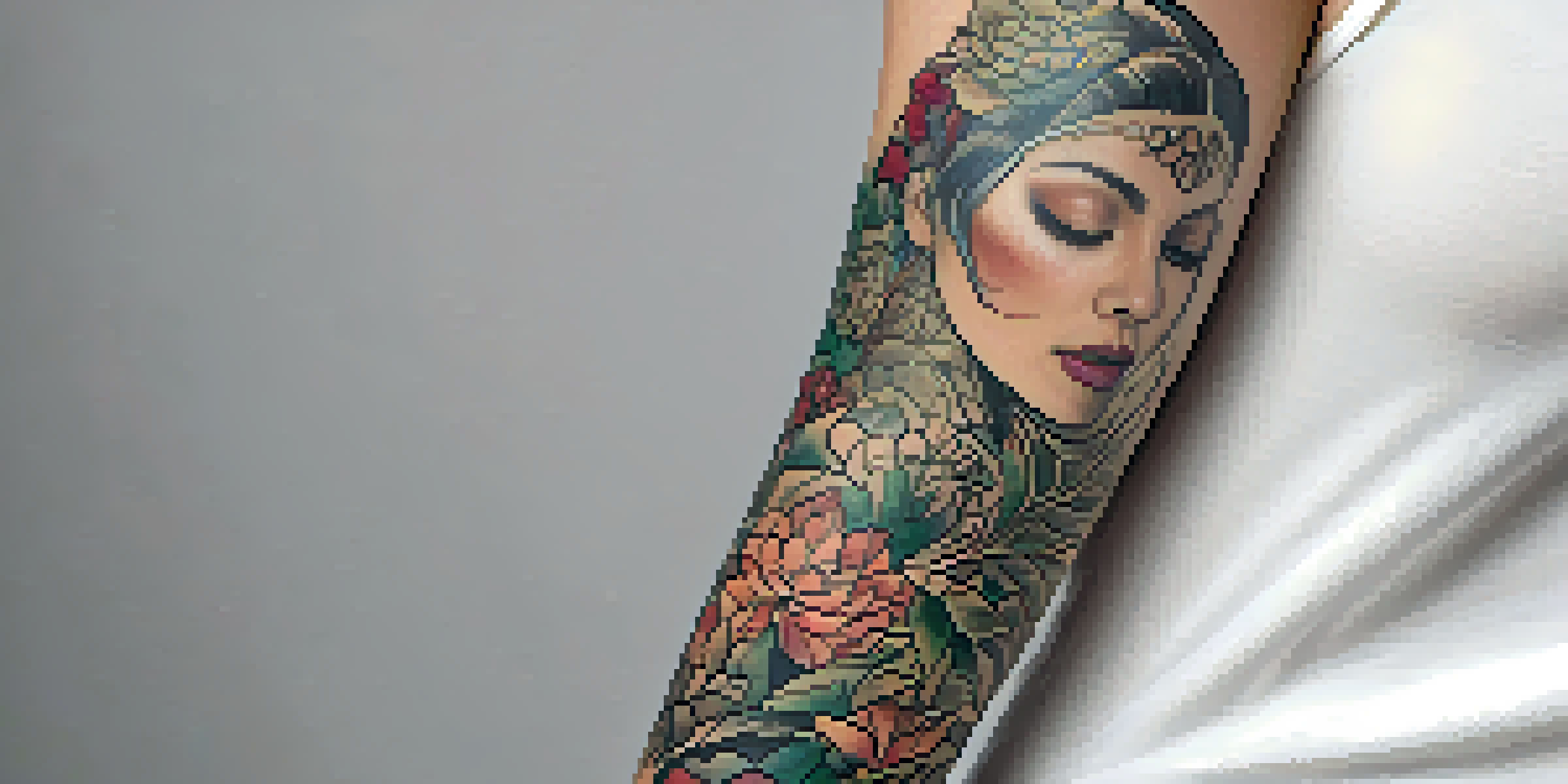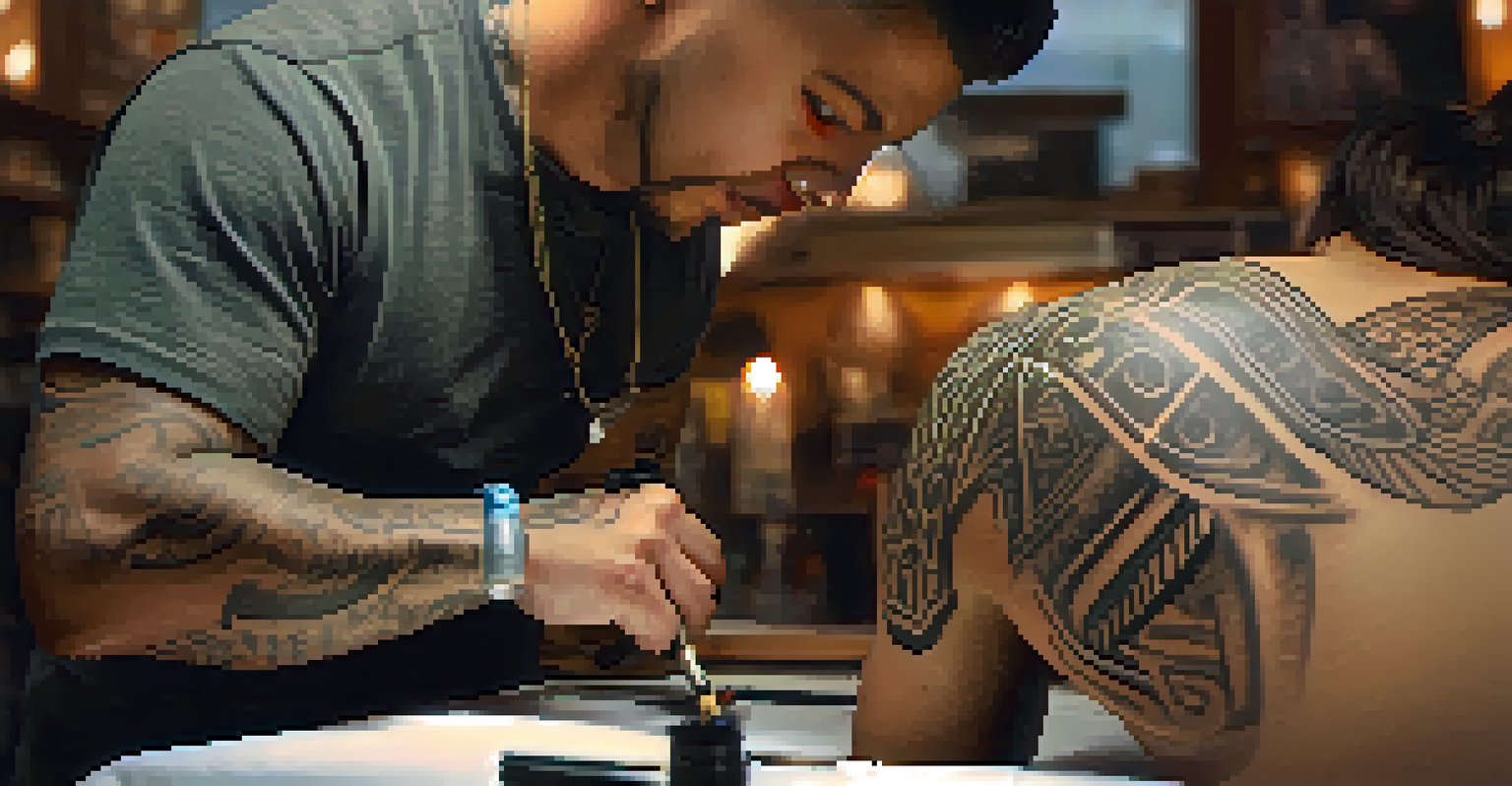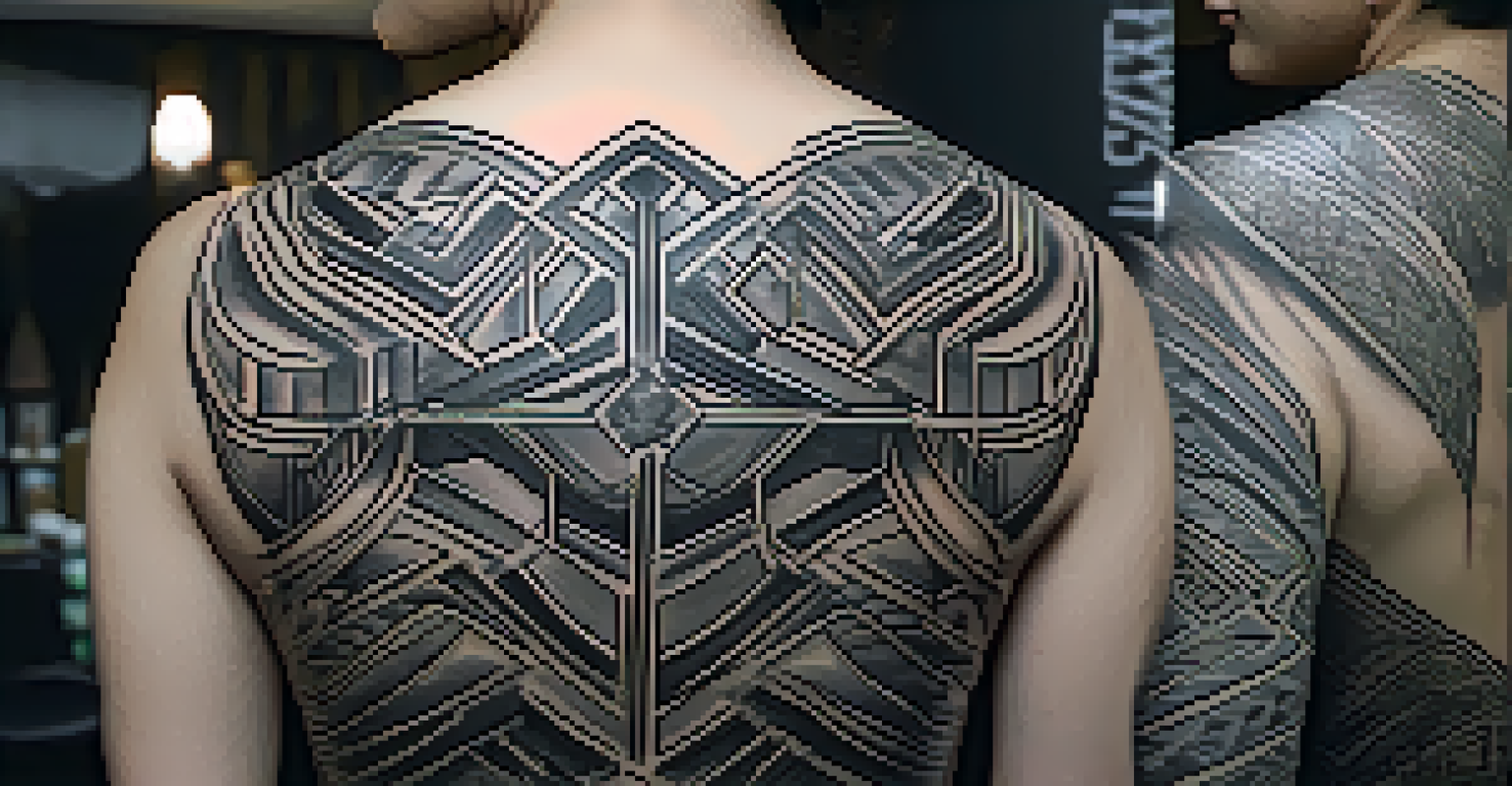Tattoo Layout: Balancing Design and Body Contours

Understanding Body Contours for Tattoo Placement
Every body is unique, and understanding its contours is crucial when planning a tattoo. The natural curves and shapes of your body can influence how a design appears, so it's important to consider these factors right from the start. For instance, a tattoo that wraps around the arm may look different than one on a flat surface like the back.
Tattoos are a way of keeping memories alive.
By analyzing body contours, artists can create tattoos that complement and enhance your natural shape. This not only makes the tattoo more visually appealing but also helps it flow with your body's movements. A well-placed tattoo can feel like a part of you, rather than something simply added on top.
Incorporating body contours into your design can also help in avoiding distortion as your body changes over time. For example, tattoos on areas prone to weight fluctuation might stretch or shrink, but a design that respects the body's natural lines can mitigate this effect.
Choosing the Right Tattoo Design for Your Body
Selecting a tattoo design should go beyond personal preference; it should also harmonize with your body shape. For instance, long, flowing designs often work well on arms and legs, while circular designs can suit areas like the shoulder or chest. Visualizing how the tattoo will look on your body can help you make a more informed choice.

Consider how different styles—like tribal, floral, or geometric—play with body contours. A tribal tattoo might flow beautifully along the curves of your body, while a geometric design might need careful placement to maintain its integrity. It's all about finding a balance that feels right for you.
Body Contours Influence Tattoo Design
Understanding your body's unique shapes is essential for selecting a tattoo that enhances your natural curves.
Moreover, it's advisable to consult with your tattoo artist about your design choices. They can provide insights into how certain designs interact with body movement and shape, ensuring that you end up with a tattoo that you love for years to come.
The Role of Size in Tattoo Layout and Body Harmony
Size is a crucial factor when considering tattoo layout, as it directly impacts how the design interacts with your body contours. A large tattoo can dominate a small area, potentially overwhelming the natural lines of your body. Conversely, a tiny tattoo on a larger area might get lost or appear out of place.
The body is a canvas, and the tattoo is the art that tells your story.
Finding the right scale for your tattoo involves looking at the proportions of your body. For example, a sleeve tattoo can be expansive and intricate, allowing for more detail, while a smaller design on the wrist might need to be simpler to avoid looking cluttered. Size should complement both the design and the area of skin it occupies.
Always remember that the perceived size can change based on placement. A tattoo on the inner arm might appear larger than the same design on the ankle, so it's essential to visualize how it will fit your unique body shape.
Color Choices and Their Impact on Tattoo Visibility
Color can significantly influence how a tattoo interacts with your body contours. Bright colors can create a vibrant look that draws attention, while muted tones may blend more seamlessly with your skin. Understanding how color works with your skin tone is vital for achieving the desired effect.
For example, lighter skin tones often showcase colors like red and blue brilliantly, while darker skin may require different shades to stand out. A tattoo that incorporates contrasting colors can enhance body contours, making the design pop and accentuating your natural shape.
Size and Flow Matter in Tattoos
The scale and flow of a tattoo significantly impact how it harmonizes with your body, affecting both aesthetics and movement.
Discussing color options with your tattoo artist can provide additional insights. They can recommend shades that will work well with your body and suggest techniques to ensure the colors remain vibrant over time.
The Importance of Flow in Tattoo Layout
Flow refers to how a tattoo's design guides the eye across the body's contours. A design with good flow can create a sense of movement, making it appear more dynamic and alive. For instance, a design that follows the curve of your shoulder can enhance your body's natural lines, creating harmony.
Conversely, a tattoo that lacks flow may seem disjointed or out of place. Imagine a beautiful floral design that doesn’t follow the natural lines of your arm; it can feel like an awkward addition rather than an integrated part of your body. Prioritizing flow is essential for creating a tattoo that feels cohesive.
When collaborating with your artist, discuss how the design can be adjusted to enhance flow. This might involve altering the orientation or arrangement of elements within the tattoo to better match your body's contours.
Consultation: Working with Your Tattoo Artist
An effective consultation with your tattoo artist is key to achieving a successful tattoo layout. Share your ideas and preferences, but also be open to their professional insights. They can provide guidance on how your chosen design will work with your body shape and contours.
During this process, don't hesitate to ask questions about placement, size, and color. A good artist will appreciate your curiosity and will work to ensure that your tattoo is not only beautiful but also strategically placed for longevity and aesthetics.
Consultation Ensures Design Success
Collaborating with your tattoo artist during the consultation process helps ensure that your design aligns well with your body and personal style.
Remember, your artist is there to help you bring your vision to life, but they also have the experience and knowledge to suggest adjustments that will enhance the final result. Collaboration can lead to a tattoo that you’ll cherish for years.
Aftercare: Preserving Your Tattoo's Design and Flow
Aftercare is crucial in maintaining the integrity of your tattoo's design and flow. Proper care can prevent fading and distortion, ensuring that your tattoo remains as vibrant as the day it was inked. This includes following your artist's aftercare instructions diligently, such as avoiding sun exposure and keeping the tattoo moisturized.
As your body changes over time, the way your tattoo interacts with your contours may also shift. Regular moisturizing can help keep your skin healthy, which in turn preserves the tattoo's appearance. Additionally, staying hydrated and maintaining a healthy lifestyle can contribute to keeping your tattoo looking fresh.

If you notice any changes in your tattoo's appearance, don't hesitate to consult your artist. They can provide advice on touch-ups or reworking the design if needed, ensuring that your tattoo continues to be a true reflection of your style.
Final Thoughts on Tattoo Layout and Body Contours
Balancing tattoo design with body contours is an art form that requires careful consideration and collaboration. Understanding how your body works with different designs can lead to a more harmonious and visually pleasing tattoo. Remember, it's not just about the ink; it's about how it integrates into your lifestyle.
As you plan your tattoo, keep in mind the importance of flow, size, color, and consultation. These elements can make a significant difference in how your tattoo will look and feel over time. A well-laid-out design will not only enhance your body but also tell your personal story.
Ultimately, your tattoo should be a reflection of who you are. Take the time to explore designs, consult with professionals, and choose a layout that truly resonates with you. After all, this is a piece of art that you’ll carry with you for a lifetime.